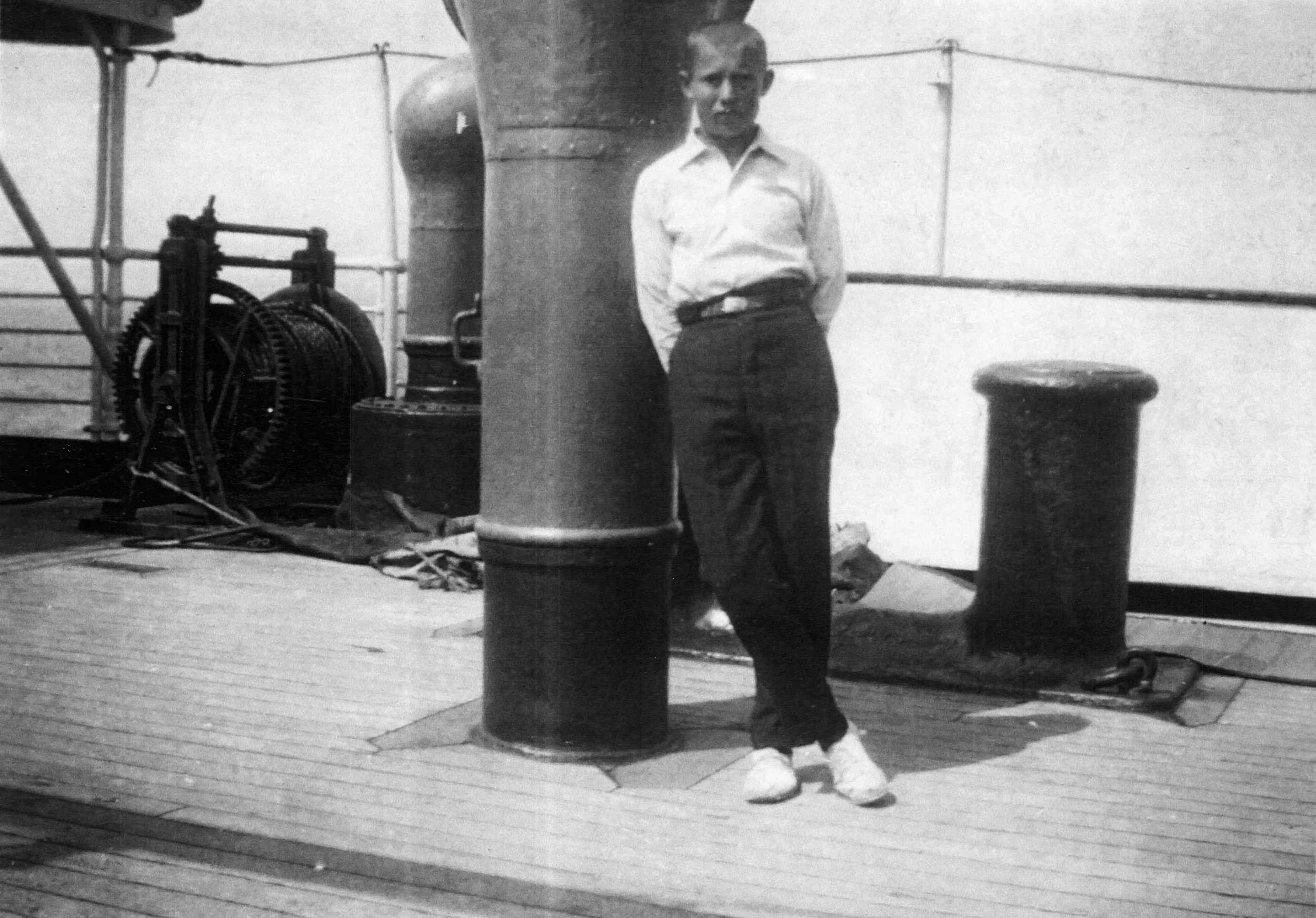Mosaic - Nick Friesen
1913-2011 | Born in Siberia, Russia | Arrived on Angel Island in 1929
Nick Friesen’s family arrived on Angel Island as refugees of the Russian Revolution, fleeing religious and political persecution as members of the Mennonite community. They were among the 8,000 Russians and Jews who passed through Angel Island between 1910 and 1940.
Like most white European arrivals, Nick and his family were only briefly detained on Angel Island. Nick settled in the Central Valley, where he became a farmer and raised his family.
The Friesen family, Siberia (1927). Nicolai (Nick) stands on the far left in the back row. Courtesy of Nick Friesen
Nick's ancestors were Mennonites who had migrated first from Prussia to Ukraine, and later to Siberia. Nick's father bought 250 acres of land in Siberia and became a successful wheat farmer. As wealthy landowners and members of a persecuted religious minority, the family lost everything when Stalin came to power. In search of a better future, the Friesens secretly crossed the frozen Amur River into Manchuria.
Nick on the deck of the Tenyo Maru, the ship his family took from Kobe, Japan to San Francisco, 1929. Courtesy of Nick Friesen
Nick's family waited eight months in Harbin for visas before boarding a ship to the US in 1929. They were aided by a Mennonite organization in Kansas, which made arrangements with the Secretary of Labor for small groups of Russian Mennonites to be admitted to the country as skilled farmers. Under today's immigration laws, the Friesens would likely be classified as "asylum seekers" or "refugees." At the time they came to the US this was not an immigration status.
The San Francisco skyline in 1929. Nick took this photo from the deck of his ship as it entered the San Francisco Bay, prior to getting off the boat at Angel Island. Courtesy of Nick Friesen
When their ship arrived in San Francisco, the family of six was taken to Angel Island. They enjoyed what Nick later described as a “good dinner” at the Immigration Station. The next day, the Friesens were released after brief interviews and physical examinations. They went directly from San Francisco to Reedley, a small city in the Central Valley where there was already an established Mennonite community.
Nick and Helen Klippenstein’s wedding photo, 1935. Courtesy of Nick Friesen
The family quickly settled into their new life in Reedley. As Nick remembers it, they arrived late on a Saturday night, attended church on Sunday, and started work on Monday. Nick married Helen Klippenstein in 1930, and they raised four children together. Widowed at eighty-three, Nick married Mary Krueger, a German Mennonite from British Columbia, in 1999.
Nick at the opening day celebration for the newly remodeled Detention Barracks Museum in 2009. Courtesy of Nick Friesen
Nick was one of the ribbon cutters at the Grand Re-opening of the Angel Island Immigration Station in 2009. When asked what Angel Island meant to him, Nick replied, “The Angel Island Immigration Station played an important part in our coming to America. We were so happy to finally be in the United States. Angel Island represents freedom and nothing but happy memories for me.”







